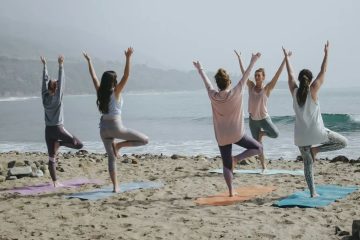Recently, I had an intriguing conversation with my friend Vikas on our society’s basketball court. Vikas is an excellent practitioner of Yoga, and he does his practices often around the court. Though we had never discussed spirituality or meditation before but this time we discussed not only work, books but also the Indian spiritual masters. After exchanging New Year pleasantries, we found ourselves talking about the impact of AI on our lives and businesses.
It was a casual conversation, as our past discussions never really ventured into the realms of spirituality. But as we spoke, I brought up an interesting prediction from the 1920s. Renowned economist John Maynard Keynes had forecasted that in the future, we would work only four days a week, thanks to advancements in technology. I mentioned that with AI progressing rapidly, this could very well become a reality (though it has been close to 100 years from the prediction). One of our common concerns, however, was about the future of jobs – would there be enough work to keep everyone occupied and economy running?
AI is already transforming every aspect of life, the endless possibilities of Biz Apps to generating artwork to creating videos. Initially, I believed that impact on creative work would be the last by AI, but my perspective changed when I watched a cat cook a meal in a video. While the video was amusing, it also made me rethink the boundaries of AI’s creativity.
One thing became clear to me—the future may hold something unique: people will increasingly seek out real human experiences. Activities that involve human participation or performances,, like dance, will hold more value than any AI-generated fantasy. People will want to see and connect with others, and the demand for authentic human expression will rise.
If we revisit Keynes’ prediction of “less work,” I am confident that it will happen. The real question is: what will people do with their newfound spare time? Will they continue to watch endless cat videos, or will they pursue things they genuinely enjoy? Over time, I believe the latter will take precedence. People will look for activities that engage them—activities that require human involvement, passion, and creativity.
This conversation with Vikas stayed with me, and the same weekend, the thought resurfaced. That Saturday, my daughter Adviti – who is learning Bharatnatyam few months – had a dance performance. The event concluded with a deeply insightful speech from her teacher. The teacher explained –
In Bharatnatyam, the performer has to be completely in the present moment. Body (through gestures and movements), mind (focusing on rhythm and mudras), and facial expressions (conveying emotions) all require perfect coordination of body, mind, and soul. Without this harmony, the performance falls flat. This concept resonated deeply with me, extending far beyond Bharatnatyam. It mirrored my understanding of meditation.
As an audience, we were moved by the kids’ performances, but we were absolutely entranced by the senior performers. The speech, combined with the mesmerizing performances, made me realize something profound: perhaps the true joy of a dance like Bharatnatyam lies not in watching it, but in performing it. It’s an activity that requires full human engagement – body, mind, and soul – something AI simply cannot replicate.
Reflecting on both my conversation with Vikas and the insights I gained from the dance performance, I saw a clear connection. The future will indeed offer fewer “work hours,” as Keynes predicted. But more importantly, people will likely grow tired of passive consumption – whether it’s endless reels or AI-generated content – and turn to more fulfilling, creative pursuits. Activities that involve deep personal expression, like cooking, dancing, or art, will become more valuable. In fact, it’s possible that many people will turn inward, exploring spirituality. It’s not just about watching a cat cook dinner, but about immersing yourself in the joy of cooking your own meal. Similarly, it’s not just about admiring a dance – it’s about becoming part of the rhythm, the movement, and the expression yourself.
Also read –
Playing golf, work and meditation
Meditation
Unifying Heart, Mind and Action
In the end, AI may change how we work and live, but it will never replace the deep human need to create, to express, and to connect. The future, as I see it, will not be defined by what AI does for us, but by what we choose to do for ourselves.

1 Comment
Om Prakash Gupta · January 6, 2025 at 3:59 pm
It seems that rahu is transforming you slowly in reality of world. We are passing through mechanical life and this will change to spirituality slowly. Which will cause rise of Sanatan all over the world. We have to forget our past thinking and behaviours and change totally to something new which everybody will follow in future. Only those who will survive will do this.